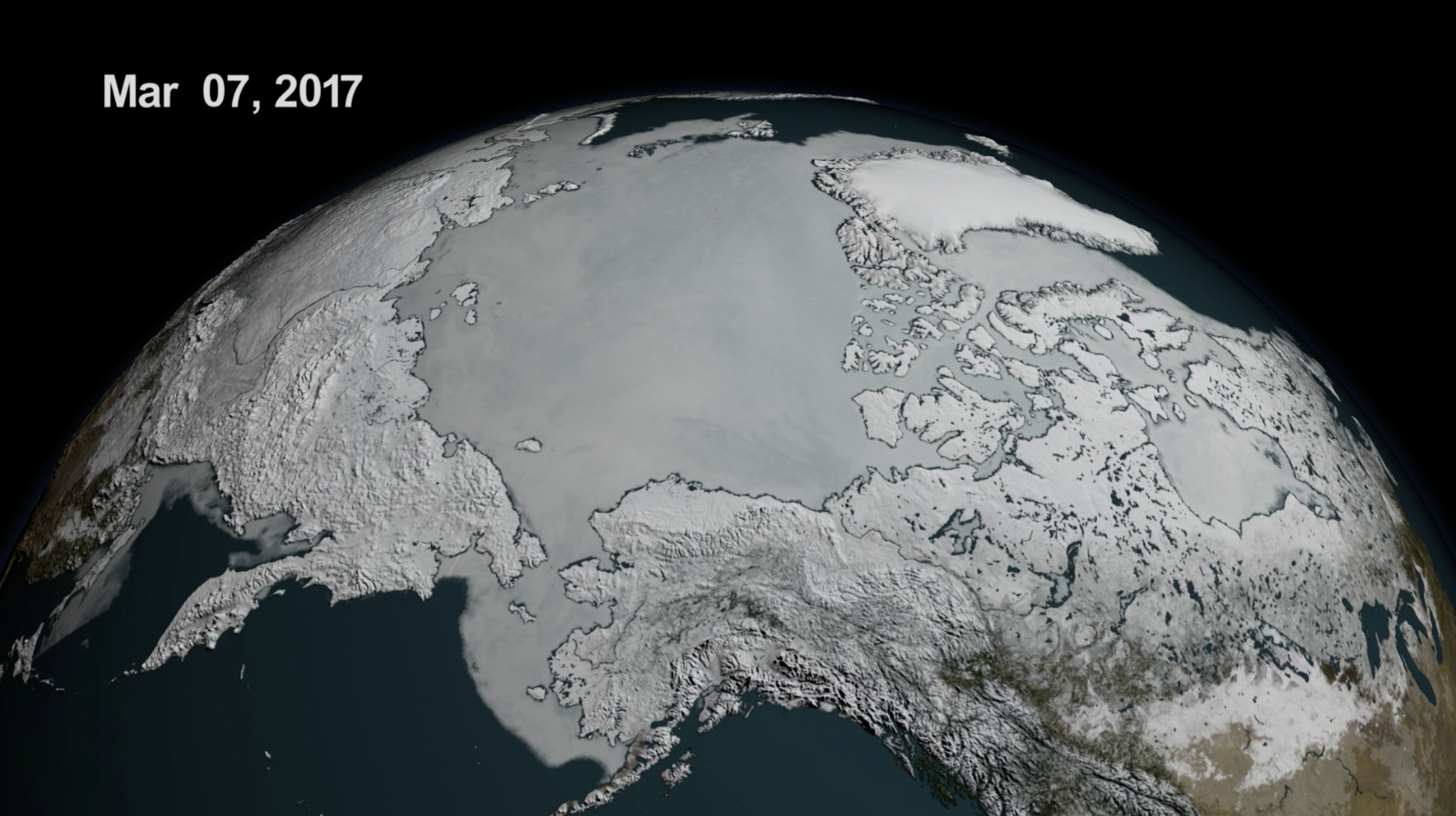Arctic sea ice reached a record low maximum extent for the third straight year, according to scientists at the National Snow and Ice Data Center (NSIDC) and NASA.

On March 7, sea ice extent over the Arctic Ocean reached 14.42 million square kilometers (5.57 million square miles), then gradually began its decline with the start of the melt season. The sea ice maximum refers to the point at which sea ice is at its highest seasonal extent. The sea ice minimum will occur sometime in September.
The 2017 Arctic maximum is now the lowest in the 38-year satellite record, beating 2015’s maximum of 14.517 million square kilometers (5.605 million square miles) on February 25, and 2016’s maximum of 14.52 million square kilometers (5.606 million square miles).
NSIDC director Mark Serreze said, “I have been looking at Arctic weather patterns for 35 years and have never seen anything close to what we’ve experienced these past two winters.”
The Arctic’s sea ice maximum extent has dropped by an average of 2.8 percent per decade since 1979. The summertime minimum extent losses are nearly five times larger: 13.5 percent per decade. In addition to shrinking in extent, the sea ice is also thinning and becoming more vulnerable to the action of ocean waters, winds and warmer temperatures, according to NASA website.
